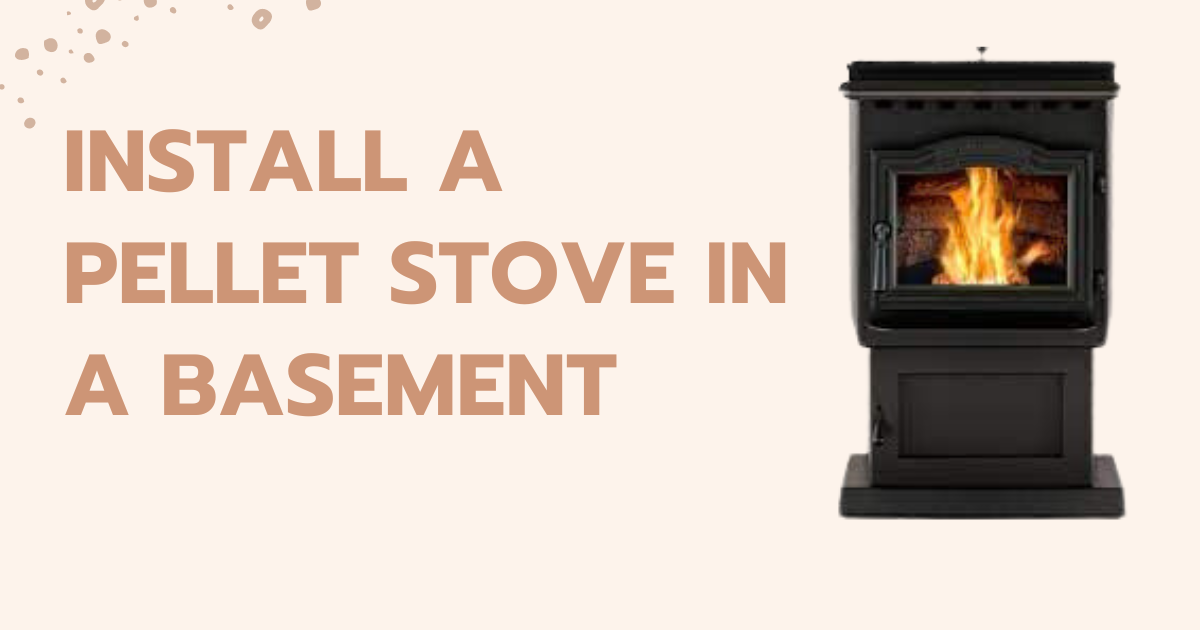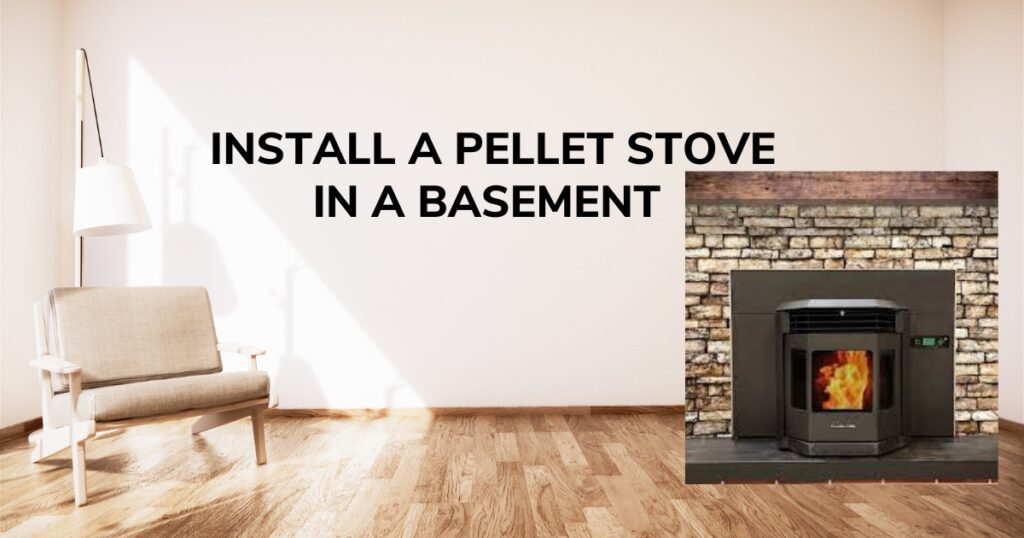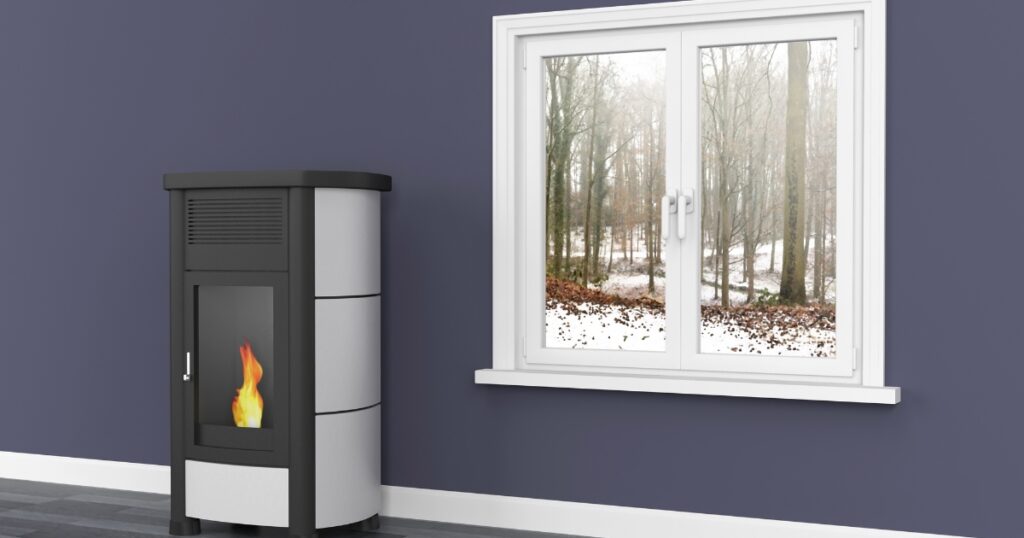How to Install a Pellet Stove in a Basement – A Comprehensive Guide
Are you considering installing a pellet stove in your basement to keep your home warm and cozy during the winter months? Pellet stoves are efficient, eco-friendly, and cost-effective heating solutions that can provide warmth to your home without breaking the bank. In this guide, we will take you through a step-by-step process of installing a pellet stove in your basement, including the necessary tools, safety precautions, and maintenance tips.
Definition of a Pellet Stove
A pellet stove venting is a heating appliance that burns wood pellets to produce heat. Pellets are made of compressed wood waste and are an eco-friendly alternative to traditional wood stoves. Pellet stoves venting are easy to use and have a high combustion efficiency.

Benefits of pellet stove installation in basement
Basements are often the coldest part of a home, making it difficult to maintain a comfortable temperature. Installing a pellet stove in a basement can provide an efficient and cost-effective heating solution. Pellet stoves also provide a cozy and inviting ambiance to a basement, making it a comfortable and functional living space.
Things to Consider Before Installing a Pellet Stove
Before Basement pellet stove installation a pellet stove in a basement, there are a few things to consider. Firstly, you need to check if your local building codes allow the installation of a pellet stove in a basement. You should also consider the ventilation requirements, as a proper ventilation system is crucial for the safety and efficiency of the pellet stove.
Step by Step Guide: How to Install a Pellet Stove in a Basement
1. Pellet stove Pre-Installation Preparation Guide
a. Check Local Regulations
Before you start installing a pellet stove in your basement, make sure to check the local regulations in your area. Some states and cities have strict regulations on installing heating appliances in residential areas, and you may require a permit before starting the installation process. Check with your local building authority to ensure that you are complying with all the necessary regulations.
b. Choose the Right Location
Choosing the right location for your install pellet stove is essential for its safe and efficient operation. Consider the following factors when choosing a location:
- Accessibility: Ensure that the location is easily accessible for cleaning and maintenance.
- Clearance: Leave sufficient space around the stove to avoid any potential fire hazards. The minimum clearance required is usually specified by the manufacturer.
- Ventilation: Ensure that the location has proper ventilation to avoid the buildup of carbon monoxide gas.
- Proximity to the Chimney: The location should be near the chimney to ensure efficient and safe installation.
c. Measure the Space
Measure the space where you want to install the pellet stove to ensure that it fits properly. Measure the height, width, and depth of the area and compare it with the dimensions of the pellet stove you plan to purchase.
d. Purchase the Right Pellet Stove
Purchase a pellet stove that is suitable for your space and heating requirements. Pellet stoves come in various sizes and heating capacities, so make sure to choose one that is appropriate for your basement’s size and insulation level.
e. Gather the Necessary Tools
Gather all the necessary tools and equipment required for the installation process, such as a drill, screwdriver, level, chimney brush, and caulking gun. Make sure to have all the tools and equipment on hand before starting the installation process.
f. Prepare the Chimney
Inspect the chimney for any damage or blockage before installing the pellet stove. Clean the chimney using a chimney brush and remove any debris or blockages that may prevent proper ventilation.

You can check it out: Best Core Cutting Services in Dubai
2. Installation Process
a. Install the Chimney Pipe
Install the chimney pipe that will vent the pellet stove to the outside. The pipe should be installed in a straight line with no obstructions or sharp angles that may prevent proper ventilation. Use high-temperature sealant to secure the joints and prevent any leaks.
b. Install the Pellet Stove
Follow the manufacturer’s instructions to install the pellet stove in the chosen location. The stove should be leveled and secured to the floor to prevent any movement or instability. Use heat-resistant sealant around the stove to prevent any air leaks.
c. Connect the Pellet Stove to the Chimney Pipe
Connect the pellet stove to the chimney pipe using a vent pipe adapter. Ensure that the adapter is properly sealed and secured to prevent any leaks. Use high-temperature sealant around the joint to prevent any air leaks.
d. Install the Ventilation System
Install the ventilation system to ensure proper air circulation in the basement. The ventilation system should include a fresh air intake and an exhaust fan to ensure adequate ventilation and prevent the buildup of carbon monoxide gas.
e. Connect the Power Source
Connect the pellet stove to a power source using a dedicated electrical circuit. Hire a licensed electrician if you are not familiar with electrical installations.

Safety Measures
1. Maintaining Adequate Clearance Around the Pellet Stove
It’s essential to maintain adequate clearance around the pellet stove to prevent any potential fire hazards. The clearance requirements vary depending on the model of the pellet stove, so it’s crucial to follow the manufacturer’s instructions carefully.
2. Regular Cleaning and Maintenance
Regular cleaning and maintenance are crucial for the safety and efficiency of the pellet stove. It’s recommended to clean the pellet stove and chimney pipe at least once a year to remove any buildup of soot or ash.
3. Carbon Monoxide Detectors and Alarms
Carbon monoxide is a colorless and odorless gas that can be deadly if inhaled. It’s crucial to install carbon monoxide detectors and alarms near the pellet stove to ensure the safety of the occupants of the home.
4. Proper Disposal of Pellet Ash
Pellet ash should be disposed of properly to prevent any fire hazards. It’s recommended to store the ash in a metal container with a tight-fitting lid and dispose of it in a designated area away from the home.
Best pellet stove for basement
If you’re looking for the best pellet stove for your basement, there are several factors to consider such as the size of your basement, the amount of heat you need, and your budget. Here are some pellet stoves that are highly recommended for basements:
Comfortbilt HP22-N Pellet Stove: This stove has a heating capacity of up to 2,800 square feet, making it a good option for larger basements. It has a large hopper capacity of 55 pounds, which means it can burn for up to 24 hours without needing a refill.
Castle Serenity Pellet Stove: This stove has a heating capacity of up to 1,500 square feet and comes with a smart controller that allows you to set the temperature and program the stove to turn on and off automatically. It has a hopper capacity of 40 pounds.
US Stove 5660 Bay Front Pellet Stove: This stove has a heating capacity of up to 2,200 square feet and comes with a bay front design that adds an aesthetic touch to your basement. It has a hopper capacity of 55 pounds and comes with a digital control board that allows you to program the stove to turn on and off automatically.
Englander 25-PDV Pellet Stove: This stove has a heating capacity of up to 2,200 square feet and comes with a large hopper capacity of 80 pounds. It has a simple and easy-to-use digital control board and is designed to be highly efficient in burning pellets.
Ultimately, the best pellet stove for your basement will depend on your specific needs and preferences. It’s important to do thorough research and consider all the factors before making a purchase.
Maintenance Tips
1. Regular Cleaning
Clean the pellet stove regularly to remove any ash and debris that may cause a fire hazard. Use a vacuum cleaner or an ash vacuum to clean the stove and dispose of the ash properly.
2. Ash Disposal
Dispose of the ash properly to prevent any fire hazards. Use a metal container with a tight-fitting lid to store the ash and dispose of it in a designated ash disposal area.
3. Pellet Storage
Store the pellets in a dry and cool place to prevent moisture buildup that may affect their quality. Use airtight containers to store the pellets and avoid buying more pellets than you can store.
4. Chimney Cleaning
Clean the chimney regularly to prevent the buildup of creosote and other debris that may cause a fire hazard. Hire a professional chimney cleaner to inspect and clean the chimney at least once a year.
Can a Pellet Stove Be Vented Straight Through a Wall?
Yes, a pellet stove can be vented straight through a wall. This is known as a horizontal venting installation. However, there are some important factors to consider before choosing this type of installation.
Firstly, the stove and venting system must be approved for horizontal installation by the manufacturer and meet local building codes. Secondly, the vent pipe must be installed with the proper clearances to combustible materials, and any wall pass-throughs must be properly sealed to prevent leaks.
Additionally, a horizontal venting installation may not be suitable for all pellet stove models or all basement layouts. It’s important to consult with a professional installer to determine if this type of installation is appropriate for your specific situation.
It’s also worth noting that a vertical venting installation, which goes through the roof, is generally considered to be the safest and most efficient option for pellet stoves. However, this may not always be feasible or desirable, especially in basement installations where a chimney may not be readily available.
Cost of installing a pellet stove
The cost of installing a pellet stove can vary depending on a variety of factors, including the type of stove, the complexity of the installation, and the location of your home. Here’s what you need to know about the cost of installing a pellet stove:
Pellet stove cost: The cost of the pellet stove itself can vary depending on the brand, model, and features you choose. On average, pellet stoves can range in price from $1,000 to $3,000 or more.
Installation cost: The cost of installation can also vary depending on the complexity of the installation and the location of your home. In general, installation costs can range from $500 to $1,500 or more.
Additional costs: In addition to the cost of the stove and installation, there may be additional costs associated with installing a pellet stove. For example, if you need to have a chimney installed or modified, this can add to the overall cost. You may also need to purchase a hearth pad or other accessories.
Tax credits and rebates: It’s important to note that there may be tax credits or rebates available for installing a pellet stove. These incentives can help offset the overall cost of installation and make it more affordable.
Overall, the cost of installing a pellet stove can range from a few hundred dollars to several thousand dollars, depending on a variety of factors. It’s important to do your research and get multiple quotes from licensed and experienced professionals to ensure that you are getting a fair price for the installation.
Conclusion
Installing a pellet stove in your basement is an efficient and cost-effective way of heating your home during the winter months. Follow the steps outlined in this guide to ensure a safe and efficient installation process. Regular maintenance and adherence to safety precautions are essential to ensure that the pellet stove operates safely and efficiently.
FAQs - how to install a pellet stove in a basement
-
1. How much does it cost to install a pellet stove in a basement?
The cost of installing a pellet stove in a basement varies depending on the model of the pellet stove and the complexity of the installation. On average, it can cost between $2,000 and $4,000.
-
2. Can a pellet stove be vented through a basement window?
No, it's not recommended to vent a pellet stove through a basement window, as it can lead to improper ventilation and potential safety hazards.
-
3. What is the best location for a pellet stove in a basement?
The best location for a pellet stove in a basement is away from any combustible materials and has adequate clearance around the stove.
-
4. How often should I clean my pellet stove?
It's recommended to clean the pellet stove and chimney pipe at least once a year to ensure its safety and efficiency.
-
5. Are pellet stoves safe to use in a basement?
Yes, pellet stoves are safe to use in a basement, provided that they are installed properly and follow the manufacturer's instructions carefully.